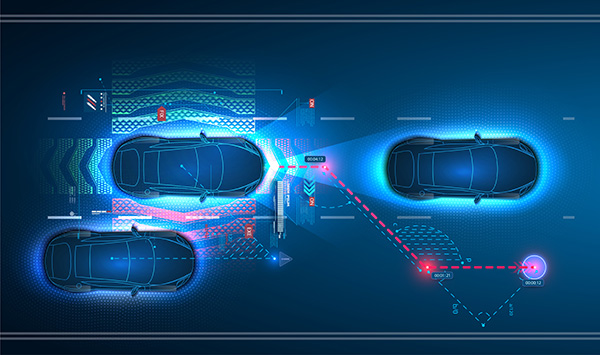
Driving technology has seen a massive transformation over the years, but few advancements have been as impactful as Advanced Driver Assistance Systems (ADAS). ADAS is becoming a standard feature in modern vehicles, designed to enhance safety, improve convenience, and reduce human error. But how exactly does it work, and why is it such a game-changer? Let’s explore the ins and outs of this groundbreaking technology shaping the driving future.
What Exactly Is ADAS
ADAS stands for Advanced Driver Assistance Systems, a suite of electronic technologies that help drivers navigate the road more safely and efficiently. These systems use a combination of cameras, sensors, radars, and software to monitor the vehicle's surroundings, detect potential hazards, and assist the driver in real time.
From warning drivers about a potential collision to helping maintain lane discipline, ADAS is designed to prevent accidents and make driving less stressful. It’s like having an extra set of eyes on the road, ensuring you’re always aware of your surroundings, even in challenging conditions.
The Key Features That Set ADAS Apart
What makes ADAS so revolutionary is the variety of features it offers, each targeting specific aspects of driving safety and convenience. Here’s a closer look at some of the most prominent systems:
Collision Avoidance Systems
One of the most critical functions of ADAS is collision avoidance. These systems can detect potential obstacles in front of or behind your vehicle, such as other cars, pedestrians, or objects. If a collision seems imminent, the system provides warnings and, in some cases, automatically applies the brakes to prevent or minimize impact.
Lane Departure Warning and Lane Keep Assist
Ever drift out of your lane unintentionally? Lane departure warning systems alert you when your vehicle veers out of its lane without using a turn signal. Lane keep assist takes this a step further by gently steering the car back into its lane, ensuring safer travel on highways and busy roads.
Adaptive Cruise Control
Traditional cruise control systems require constant adjustment to maintain a safe distance from the car ahead. Adaptive cruise control solves this by automatically adjusting your speed based on traffic flow, keeping a safe following distance at all times.
Blind Spot Monitoring
Changing lanes can be risky if you can’t see what’s in your blind spots. Blind spot monitoring uses sensors to detect vehicles in adjacent lanes and provides visual or audible alerts to prevent accidents.
Traffic Sign Recognition
Missing a road sign, like a speed limit or a stop sign, can lead to serious consequences. Traffic sign recognition systems identify and display these signs on your dashboard, helping you stay compliant with road regulations.
Automatic Parking Assistance
Parking can be a challenge, especially in tight spaces. Some ADAS features include automatic parking assistance, where the system takes over steering to guide your car into a parking spot, leaving you to control the brake and accelerator.
How ADAS Enhances Driver Safety
The primary goal of ADAS is to make driving safer for everyone on the road. By addressing the most common causes of accidents—human error and delayed reaction times—ADAS significantly reduces the likelihood of collisions.
For example, features like forward collision warning and automatic emergency braking are designed to react faster than a human can. This is particularly valuable in scenarios where seconds matter, such as when a pedestrian suddenly crosses the road.
The Convenience Factor
Beyond safety, ADAS also adds a layer of convenience that makes driving a more enjoyable experience. Whether it’s adaptive cruise control managing your speed on long road trips or parking assist taking the stress out of parallel parking, these systems are all about making life easier for drivers.
ADAS also contributes to reduced fatigue during long drives by assisting with tasks like maintaining lane position and controlling speed. This is especially beneficial for people who frequently commute or drive long distances.
Keep Your ADAS System Healthy
While ADAS is incredibly advanced, it’s not foolproof. For these systems to work effectively, they rely on sensors, cameras, and software that need regular calibration and maintenance. Misaligned cameras, dirty sensors, or outdated software can compromise the accuracy of the system, reducing its ability to keep you safe.
If you’re in Idaho Falls, ID, and your ADAS features aren’t working as intended, having your vehicle inspected by professionals is crucial. Proper maintenance ensures that your car’s safety features are always performing at their best.
Is your car’s ADAS system ready to keep you safe? Let Oswald Service and Repair in Idaho Falls, ID, inspect and calibrate your advanced safety features. Schedule your appointment today and drive with confidence!